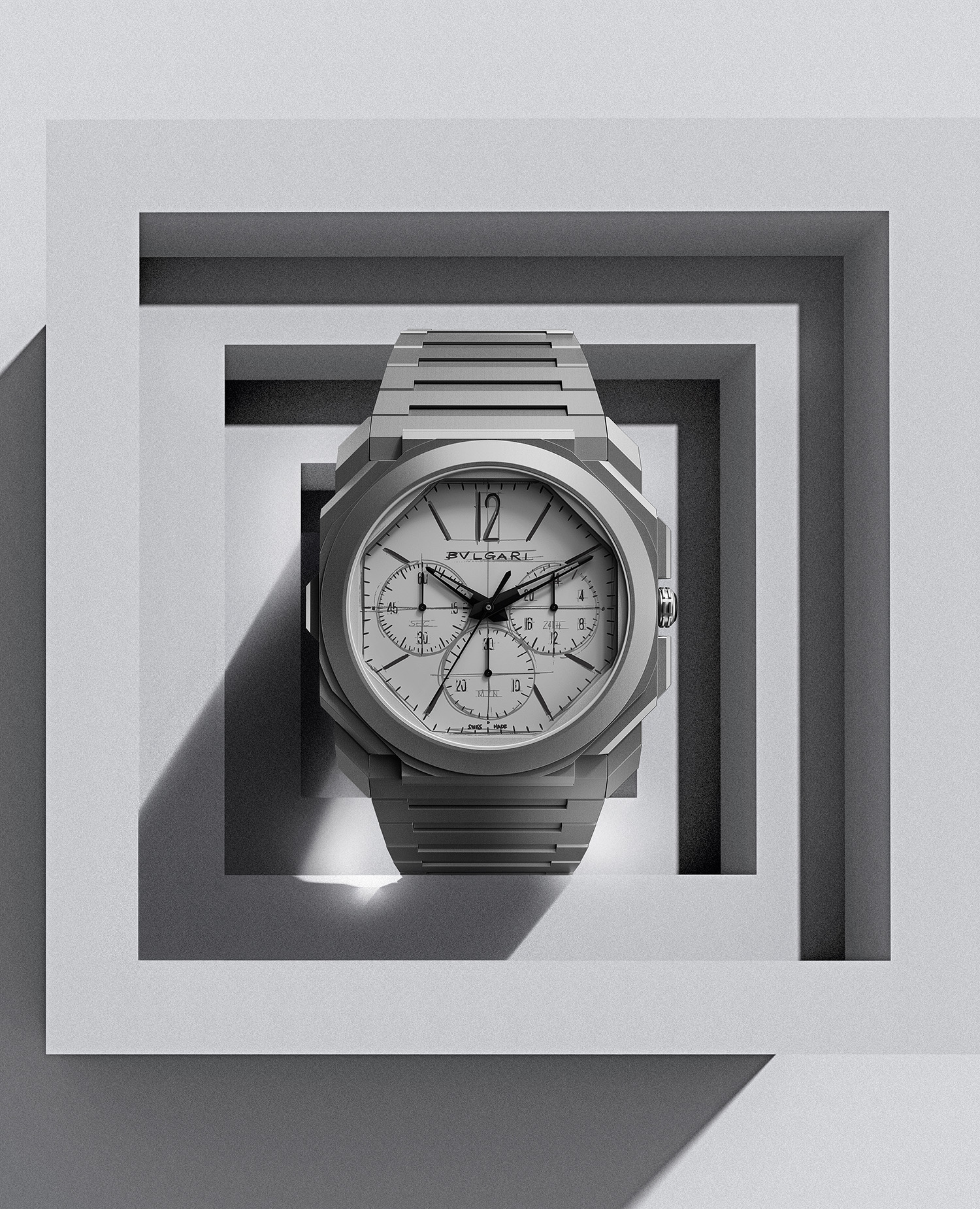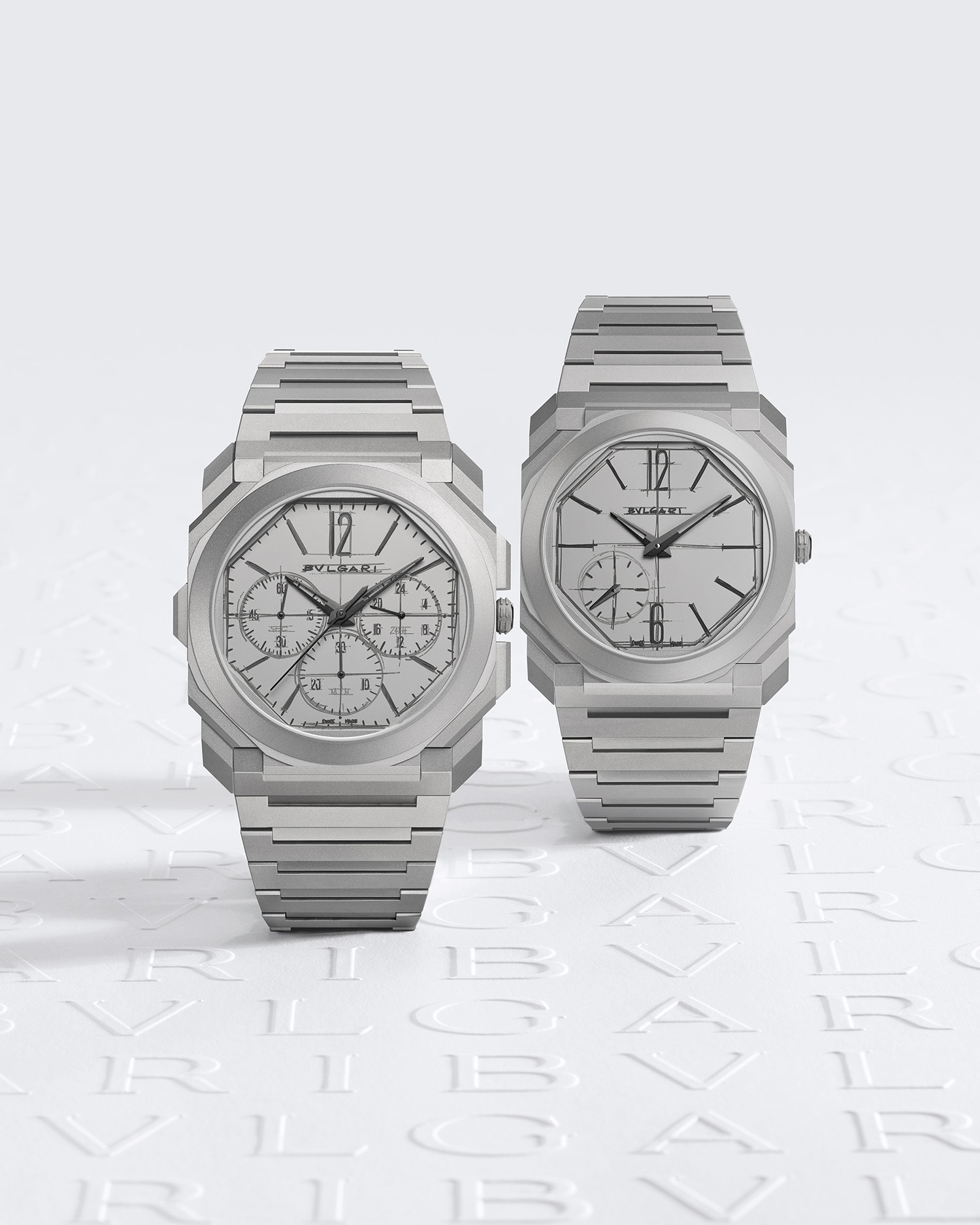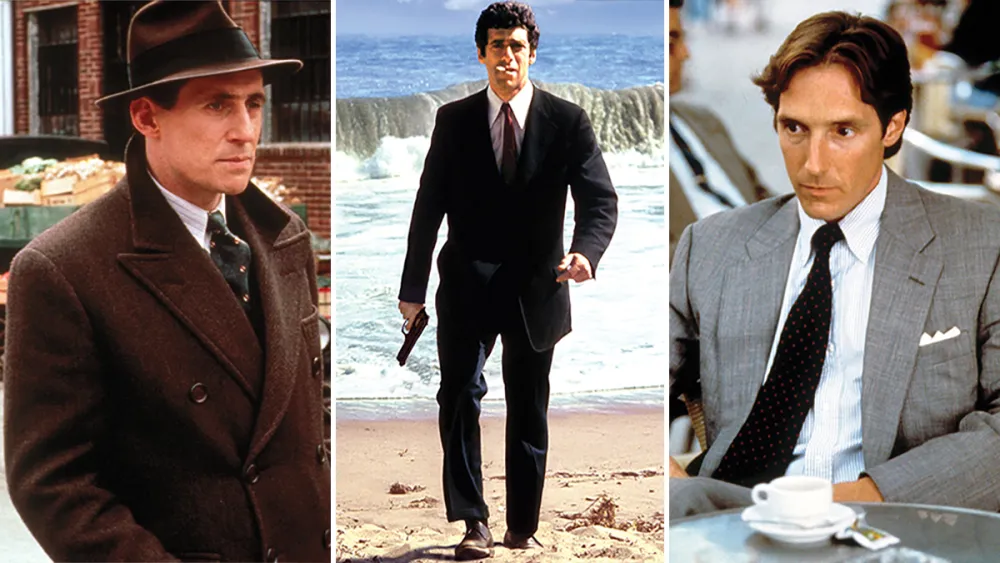
Robb Interview: Bulgari CEO, Jean-Christophe Babin
The Bulgari CEO on records, recognition and propelling the Roman jeweller into watchmaking’s big league.
Related articles
It’s difficult to believe now, but Bulgari’s was never a booth for which you’d make a beeline. Sure, you’d schedule an appointment; the Switzerland-based watch division of the Rome-headquartered jeweller had, after all, brought out a couple of big-swinging tourbillons since swallowing up indie watchmakers Daniel Roth and Gérald Genta at the turn of the century. But when it came to timetabling your speed dates at Baselworld—the oldest and most prestigious industry get-together until everything went Pete Tong in 2020—you’d be sure to line up the heavy-hitters first. Rolex, Omega, Patek Philippe. That’s where the headlines were written.
Bulgari’s titular timepiece had, since the late ’70s, remained—and how should we describe it—the “Romanesque” Bulgari Bulgari, a fashion-led item that over the course of several restyles had not aged all that well. And so you’d swing past Bulgari’s stand on day two or three.
That all changed in 2014. Two years earlier, Bulgari had rebooted the Octo. The round-bezelled, octagonal-cased watch had originally been launched by Gérald Genta, the legendary watch designer who, during a spectacularly productive purple patch in the 1970s, managed to conceive the holy trinity of luxury sports watches: Audemars Piguet’s Royal Oak, IWC’s Ingenieur and Patek Philippe’s Nautilus.
Together, Bulgari’s then-watch boss Guido Terreni (now CEO of Parmigiani Fleurier) and then-design director Fabrizio Buonamassa (still at Bulgari, but since promoted to executive director of product creation) had slimmed down Genta’s design, refined the Octo’s edges and created one of the most contemporary and charismatic shapes in modern watchmaking.
Still, it wasn’t until 2014, and the launch of the Octo Finissimo Tourbillon, that it dawned on the watch press (hiya!) that Bulgari should probably appear a little higher on their Baselworld schedules. The movement inside the Finissimo Tourbillon, exhibited at the fair that year, measured just 1.95 mm-thick—the thinnest tourbillon movement ever created.
“We wanted to create a new generation of 21st-century watches,” recalls Jean-Christophe Babin, Bulgari’s CEO since 2013, as he hands me the slinky trailblazer from across a glass coffee table. It’s late March and we’re sat in the Royal Penthouse of Geneva’s grande dame, the Hotel President Wilson. Watches and Wonders 2022 is taking place on the other side of town. But rather than join the brands exhibiting in the city’s Palexpo convention centre—Rolex, Cartier, IWC and Patek Philippe among them—Babin has chosen to do his own thing; booking out one of the most expensive hotel suites in the world (it occupies the hotel’s entire eighth and top floor, looking down on a stretch of prime Lake Geneva waterfront) to showcase Bulgari’s latest watches in what are, it must be said, far more rarefied surroundings. (“I can serve whichever champagne I like here—and no one comes around at 8pm to kick us out!”)
“To do that we had to ask ourselves, ‘How do we express the elegance of the contemporary gentleman?’ The answer pushed us towards slim-line watches, which pushed us towards ultra-thin watches, which pushed us towards rethinking the traditional mechanical wristwatch.”
The Finissimo Tourbillon was a bona fide game changer, authenticating Bulgari as a big-league watchmaker and legitimising the brand’s punchy position at Baselworld, where it occupied a hallowed spot in Hall 1 between Rolex and Patek Philippe. Indeed, between 2014 and 2019, as Bulgari turned its attention to ultra-thin watchmaking, some of the most exciting watches exhibited at the show were found within the brand’s two-storey, serpent-shaped gold booth, to wit: the thinnest ever minute repeater (2016), the thinnest ever automatic winding watch (2017), the thinnest ever automatic tourbillon (2018) and the thinnest ever automatic chronograph (2019).
In 2020, citing reasons of spiralling costs, Bulgari quit Baselworld (the world’s most expensive hotel suite is apparently a cost-effective alternative). Yet the records kept coming. In the year that saw Covid-19 force production lines to grind to a halt, Bulgari announced the thinnest ever automatic tourbillon chronograph, followed in 2021 by the thinnest ever perpetual calendar.
Last year, that perpetual calendar scooped the biggest accolade in watchmaking, named best overall watch at the prestigious Grand Prix d’Horlogerie de Genève.
“We’ve won awards before,” says Babin, who before joining Bulgari served as president and CEO of TAG Heuer for 13 years. “But never the top award, so it was a crowning event of seven years of dedication and commitment. Externally, it brought a lot of spotlight onto the brand. Internally, it provided a huge motivation. No brand has ever broken so many consecutive records. No brand ever built an icon in just 10 years.”
Hublot might counter that statement, nodding towards its Big Bang. Bell & Ross, too, signalling in the direction of its BR-01. But Babin is right. The Octo Finissimo joins the pantheon of luxury sports watches as a genuinely new—and the Finissimo differentiates itself from Genta’s original Octo just enough to be called “new”—Hall of Famer.
This year marked a decade since the Octo’s relaunch. Naturally, there was speculation as to how Bulgari would mark the occasion. The answer: the Octo Finissimo Ultra—the thinnest mechanical watch, full stop, ever. “This year we are celebrating 10 years of the Octo through a new world record, the eighth world record,” says Babin. “Although, really, we can think of it as the first record of a new generation of ultra-thin watches. This one is markedly different from the first record, not only because it’s three times thinner but because it’s a totally new construction. To achieve it, we had to forget 3D watchmaking and go two-dimensional. This is basically a 2D watch. Take a look,” he says, handing me what looks like a watch made of extra-thick paper. “It’s rather mind-blowing.” And it is.
Employing the watch’s caseback as a mainplate, the Ultra is just 1.8 mm thick —thinner than a 20 cent coin. “The Finissimo has turned watchmaking horizontal,” says Babin. “You don’t have overlapping wheels and pinions inside, everything is on the same plane, including the crown, which is actually a wheel. The hours and minutes are displayed on separate sub-dials. Not just because they look graphically nice, but because we couldn’t have two hands on top of each other—it would have been too thick.”
Ten Finissimo Ultras are being made. On the dial, at 11 o’clock, a mainspring barrel has been laser-engraved with a QR code. Scan it and you’ll be taken to NFT-linked, moving-image artwork that breaks down the watch into building blocks before building it back up again. Sidestepping the question of whether anyone actually wants a QR code on the dial of their watch, the video is pretty cool. Ultra owners will be able to upload the video to a digital art frame and play it on a wall in their homes.
Babin is a businessman. He graduated from Paris’s prestigious HEC business school, before joining Big Three management consultancy firm Boston Consulting Group (by way of the French subsidiary of Procter & Gamble). He joined TAG Heuer in 2000, shortly after it was bought by LVMH.
During our interview, Babin talks about the cash-flow benefits of manufacturing at a faster pace, with less components, than before the pandemic. “We have less working capital, more volume and more sales—which is ideal.” He explains how the plan had been to roll out e-commerce to 80 percent of Bulgari’s markets within three years. Forced by the pandemic, the brand achieved that target in nine months.
Babin is also open in revealing that watch sales still account for less than 20 per cent of Bulgari’s revenue. Mostly, that’s because the jewellery side of the business is incredibly buoyant. “We’ve had constant double-digit growth in jewellery, which has taken us to levels that were never even considered at the time of [LVMH’s] acquisition [in 2011]. Watches have been growing in single digits. All categories—watches, fragrances, accessories—have lost market share to jewellery.”
A week before our meeting, Swatch had collaborated with Omega on a low-cost, quartz version of the latter’s halo product, the Speedmaster. As police were called to control the crowds that had built up outside Swatch stores around the globe, the Bioceramic MoonSwatch usurped the Finissimo Ultra as the most talked-about watch of 2022. I ask Babin what he thought of the collaboration, and whether the buzz generated by the coming together of two polar-opposite watch brands was a good thing for the industry in general?
“For Swatch, it’s been phenomenal. We all saw the queues. Now, if I reason in terms of Bulgari, would I do a collaboration with our B.zero1 [fine jewellery collection]? I’m not sure. As a luxury brand, I’m not sure it’s good to lend your name, your icon, to a brand that costs 20 times less. For right or wrong, I would have resisted. Over my dead body, but maybe I’m just too conservative, maybe I’m just too narrow-minded when it comes to thinking about new luxury.”
Handing back the most futuristic watch I’ve ever seen, I highly doubt that.
This piece is from our new Watch Issue – on sale now. Get your copy or subscribe here, or stay up to speed with the Robb Report weekly newsletter.
Subscribe to the Newsletter
Recommended for you
Watch of the Week: TAG Heuer Formula 1 | Kith
The legendary sports watch returns, but with an unexpected twist.
By Josh Bozin
May 2, 2024
Omega Reveals a New Speedmaster Ahead of the Paris 2024 Olympics
Your first look at the new Speedmaster Chronoscope, designed in the colour theme of the Paris Olympics.
By Josh Bozin
April 26, 2024
You may also like.
You may also like.
Watch of the Week: TAG Heuer Formula 1 | Kith
The legendary sports watch returns, but with an unexpected twist.
Over the last few years, watch pundits have predicted the return of the eccentric TAG Heuer Formula 1, in some shape or form. It was all but confirmed when TAG Heuer’s heritage director, Nicholas Biebuyck, teased a slew of vintage models on his Instagram account in the aftermath of last year’s Watches & Wonders 2023 in Geneva. And when speaking with Frédéric Arnault at last year’s trade fair, the former CEO asked me directly if the brand were to relaunch its legacy Formula 1 collection, loved by collectors globally, how should they go about it?
My answer to the baited entreaty definitely didn’t mention a collaboration with Ronnie Fieg of Kith, one of the world’s biggest streetwear fashion labels. Still, here we are: the TAG Heuer Formula 1 is officially back and as colourful as ever.
As the watch industry enters its hype era—in recent years, we’ve seen MoonSwatches, Scuba Fifty Fathoms, and John Mayer G-Shocks—the new Formula 1 x Kith collaboration might be the coolest yet.

Here’s the lowdown: overnight, TAG Heuer, together with Kith, took to socials to unveil a special, limited-edition collection of Formula 1 timepieces, inspired by the original collection from the 1980s. There are 10 new watches, all limited, with some designed on a stainless steel bracelet and some on an upgraded rubber strap; both options nod to the originals.
Seven are exclusive to Kith and its global stores (New York, Los Angeles, Miami, Hawaii, Tokyo, Toronto, and Paris, to be specific), and are made in an abundance of colours. Two are exclusive to TAG Heuer; and one is “shared” between TAG Heuer and Kith—this is a highlight of the collection, in our opinion. A faithful play on the original composite quartz watch from 1986, this model, limited to just 1,350 pieces globally, features the classic black bezel with red accents, a stainless steel bracelet, and that creamy eggshell dial, in all of its vintage-inspired glory. There’s no doubt that this particular model will present as pure nostalgia for those old enough to remember when the original TAG Heuer Formula 1 made its debut.

Of course, throughout the collection, Fieg’s design cues are punctuated: the “TAG” is replaced with “Kith,” forming a contentious new brand name for this specific release, as well as Kith’s slogan, “Just Us.”
Collectors and purists alike will appreciate the dedication to the original Formula 1 collection: features like the 35mm Arnite cases—sourced from the original 80s-era supplier—the form hour hand, a triangle with a dot inside at 12 o’clock, indices that alternate every quarter between shields and dots, and a contrasting minuterie, are all welcomed design specs that make this collaboration so great.
Every TAG Heuer Formula 1 | Kith timepiece will be presented in an eye-catching box that complements the fun and colour theme of Formula 1 but drives home the premium status of this collaboration. On that note, at $2,200 a piece, this isn’t exactly an approachable quartz watch but reflects the exclusive nature of Fieg’s Kith brand and the pieces he designs (largely limited-edition).

So, what do we think? It’s important not to understate the significance of the arrival of the TAG Heuer Formula 1 in 1986, in what would prove integral in setting up the brand for success throughout the 90’s—it was the very first watch collection to have “TAG Heuer” branding, after all—but also in helping to establish a new generation of watch consumer. Like Fieg, many millennial enthusiasts will recall their sentimental ties with the Formula 1, often their first timepiece in their horological journey.
This is as faithful of a reissue as we’ll get from TAG Heuer right now, and budding watch fans should be pleased with the result. To TAG Heuer’s credit, a great deal of research has gone into perfecting and replicating this iconic collection’s proportions, materials, and aesthetic for the modern-day consumer. Sure, it would have been nice to see a full lume dial, a distinguishing feature on some of the original pieces—why this wasn’t done is lost on me—and perhaps a more approachable price point, but there’s no doubt these will become an instant hit in the days to come.
—
The TAG Heuer Formula 1 | Kith collection will be available on Friday, May 3rd, exclusively in-store at select TAG Heuer and Kith locations in Miami, and available starting Monday, May 6th, at select TAG Heuer boutiques, all Kith shops, and online at Kith.com. To see the full collection, visit tagheuer.com
You may also like.
8 Fascinating Facts You Didn’t Know About Aston Martin
The British sports car company is most famous as the vehicle of choice for James Bond, but Aston Martin has an interesting history beyond 007.
Aston Martin will forever be associated with James Bond, ever since everyone’s favourite spy took delivery of his signature silver DB5 in the 1964 film Goldfinger. But there’s a lot more to the history of this famed British sports car brand beyond its association with the fictional British Secret Service agent.
Let’s dive into the long and colourful history of Aston Martin.
You may also like.
What Venice’s New Tourist Tax Means for Your Next Trip
The Italian city will now charge visitors an entry fee during peak season.
Visiting the Floating City just got a bit more expensive.
Venice is officially the first metropolis in the world to start implementing a day-trip fee in an effort to help the Italian hot spot combat overtourism during peak season, The Associated Press reported. The new program, which went into effect, requires travellers to cough up roughly €5 (about $AUD8.50) per person before they can explore the city’s canals and historic sites. Back in January, Venice also announced that starting in June, it would cap the size of tourist groups to 25 people and prohibit loudspeakers in the city centre and the islands of Murano, Burano, and Torcello.
“We need to find a new balance between the tourists and residents,’ Simone Venturini, the city’s top tourism official, told AP News. “We need to safeguard the spaces of the residents, of course, and we need to discourage the arrival of day-trippers on some particular days.”
During this trial phase, the fee only applies to the 29 days deemed the busiest—between April 25 and July 14—and tickets will remain valid from 8:30 am to 4 pm. Visitors under 14 years of age will be allowed in free of charge in addition to guests with hotel reservations. However, the latter must apply online beforehand to request an exemption. Day-trippers can also pre-pay for tickets online via the city’s official tourism site or snap them up in person at the Santa Lucia train station.
“With courage and great humility, we are introducing this system because we want to give a future to Venice and leave this heritage of humanity to future generations,” Venice Mayor Luigi Brugnaro said in a statement on X (formerly known as Twitter) regarding the city’s much-talked-about entry fee.
Despite the mayor’s backing, it’s apparent that residents weren’t totally pleased with the program. The regulation led to protests and riots outside of the train station, The Independent reported. “We are against this measure because it will do nothing to stop overtourism,” resident Cristina Romieri told the outlet. “Moreover, it is such a complex regulation with so many exceptions that it will also be difficult to enforce it.”
While Venice is the first city to carry out the new day-tripper fee, several other European locales have introduced or raised tourist taxes to fend off large crowds and boost the local economy. Most recently, Barcelona increased its city-wide tourist tax. Similarly, you’ll have to pay an extra “climate crisis resilience” tax if you plan on visiting Greece that will fund the country’s disaster recovery projects.
You may also like.
Omega Reveals a New Speedmaster Ahead of the Paris 2024 Olympics
Your first look at the new Speedmaster Chronoscope, designed in the colour theme of the Paris Olympics.
The starters are on the blocks, and with less than 100 days to go until the Paris 2024 Olympics, luxury Swiss watchmaker Omega was bound to release something spectacular to mark its bragging rights as the official timekeeper for the Summer Games. Enter the new 43mm Speedmaster Chronoscope, available in new colourways—gold, black, and white—in line with the colour theme of the Olympic Games in Paris this July.
So, what do we get in this nicely-wrapped, Olympics-inspired package? Technically, there are four new podium-worthy iterations of the iconic Speedmaster.

The new versions present handsomely in stainless steel or 18K Moonshine Gold—the brand’s proprietary yellow gold known for its enduring shine. The steel version has an anodised aluminium bezel and a stainless steel bracelet or vintage-inspired perforated leather strap. The Moonshine Gold iteration boasts a ceramic bezel; it will most likely appease Speedy collectors, particularly those with an affinity for Omega’s long-standing role as stewards of the Olympic Games.
Notably, each watch bears an attractive white opaline dial; the background to three dark grey timing scales in a 1940s “snail” design. Of course, this Speedmaster Chronoscope is special in its own right. For the most part, the overall look of the Speedmaster has remained true to its 1957 origins. This Speedmaster, however, adopts Omega’s Chronoscope design from 2021, including the storied tachymeter scale, along with a telemeter, and pulsometer scale—essentially, three different measurements on the wrist.
While the technical nature of this timepiece won’t interest some, others will revel in its theatrics. Turn over each timepiece, and instead of a transparent crystal caseback, there is a stamped medallion featuring a mirror-polished Paris 2024 logo, along with “Paris 2024” and the Olympic Rings—a subtle nod to this year’s games.
Powering this Olympiad offering—and ensuring the greatest level of accuracy—is the Co-Axial Master Chronometer Calibre 9908 and 9909, certified by METAS.

A Speedmaster to commemorate the Olympic Games was as sure a bet as Mondo Deplantis winning gold in the men’s pole vault—especially after Omega revealed its Olympic-edition Seamaster Diver 300m “Paris 2024” last year—but they delivered a great addition to the legacy collection, without gimmickry.
However, the all-gold Speedmaster is 85K at the top end of the scale, which is a lot of money for a watch of this stature. By comparison, the immaculate Speedmaster Moonshine gold with a sun-brushed green PVD “step” dial is 15K cheaper, albeit without the Chronoscope complications.
—
The Omega Speedmaster Chronoscope in stainless steel with a leather strap is priced at $15,725; stainless steel with steel bracelet at $16,275; 18k Moonshine Gold on leather strap $54,325; and 18k Moonshine Gold with matching gold bracelet $85,350, available at Omega boutiques now.
Discover the collection here
You may also like.
Here’s What Goes Into Making Jay-Z’s $1,800 Champagne
We put Armand de Brignac Blanc de Noirs Assemblage No. 4 under the microsope.
In our quest to locate the most exclusive and exciting wines for our readers, we usually ask the question, “How many bottles of this were made?” Often, we get a general response based on an annual average, although many Champagne houses simply respond, “We do not wish to communicate our quantities.” As far as we’re concerned, that’s pretty much like pleading the Fifth on the witness stand; yes, you’re not incriminating yourself, but anyone paying attention knows you’re probably guilty of something. In the case of some Champagne houses, that something is making a whole lot of bottles—millions of them—while creating an illusion of rarity.
We received the exact opposite reply regarding Armand de Brignac Blanc de Noirs Assemblage No. 4. Yasmin Allen, the company’s president and CEO, told us only 7,328 bottles would be released of this Pinot Noir offering. It’s good to know that with a sticker price of around $1,800, it’s highly limited, but it still makes one wonder what’s so exceptional about it.
Known by its nickname, Ace of Spades, for its distinctive and decorative metallic packaging, Armand de Brignac is owned by Louis Vuitton Moët Hennessy and Jay-Z and is produced by Champagne Cattier. Each bottle of Assemblage No. 4 is numbered; a small plate on the back reads “Assemblage Four, [X,XXX]/7,328, Disgorged: 20 April, 2023.” Prior to disgorgement, it spent seven years in the bottle on lees after primary fermentation mostly in stainless steel with a small amount in concrete. That’s the longest of the house’s Champagnes spent on the lees, but Allen says the winemaking team tasted along the way and would have disgorged earlier than planned if they’d felt the time was right.
Chef de cave, Alexandre Cattier, says the wine is sourced from some of the best Premier and Grand Cru Pinot Noir–producing villages in the Champagne region, including Chigny-les-Roses, Verzenay, Rilly-la-Montagne, Verzy, Ludes, Mailly-Champagne, and Ville-sur-Arce in the Aube département. This is considered a multi-vintage expression, using wine from a consecutive trio of vintages—2013, 2014, and 2015—to create an “intense and rich” blend. Seventy percent of the offering is from 2015 (hailed as one of the finest vintages in recent memory), with 15 percent each from the other two years.

This precisely crafted Champagne uses only the tête de cuvée juice, a highly selective extraction process. As Allen points out, “the winemakers solely take the first and freshest portion of the gentle cuvée grape press,” which assures that the finished wine will be the highest quality. Armand de Brignac used grapes from various sites and three different vintages so the final product would reflect the house signature style. This is the fourth release in a series that began with Assemblage No. 1. “Testing different levels of intensity of aromas with the balance of red and dark fruits has been a guiding principle between the Blanc de Noirs that followed,” Allen explains.
The CEO recommends allowing the Assemblage No. 4 to linger in your glass for a while, telling us, “Your palette will go on a journey, evolving from one incredible aroma to the next as the wine warms in your glass where it will open up to an extraordinary length.” We found it to have a gorgeous bouquet of raspberry and Mission fig with hints of river rock; as it opened, notes of toasted almond and just-baked brioche became noticeable. With striking acidity and a vein of minerality, it has luscious nectarine, passion fruit, candied orange peel, and red plum flavors with touches of beeswax and a whiff of baking spices on the enduring finish. We enjoyed our bottle with a roast chicken rubbed with butter and herbes de Provence and savored the final, extremely rare sip with a bit of Stilton. Unfortunately, the pairing possibilities are not infinite with this release; there are only 7,327 more ways to enjoy yours.



























